How Machine Learning Will Influence Agriculture
The world of agriculture is on the brink of a revolution, and at the heart of this transformation is machine learning. Imagine a farmer equipped with the ability to predict weather patterns, diagnose crop diseases, and optimize irrigation schedules—all through the power of data analysis. This isn’t science fiction; it’s the reality we’re stepping into. Machine learning is not just a buzzword; it’s reshaping the very fabric of farming practices, making them more efficient, sustainable, and productive. In this article, we will explore how these advanced algorithms are changing the game for farmers around the globe. Are you ready to dive into this exciting world where technology meets tradition?
Precision farming is one of the most significant advancements brought forth by machine learning. By utilizing sophisticated algorithms, farmers can analyze vast amounts of data to make informed decisions about their crops. This approach allows for targeted interventions—think of it as giving each plant exactly what it needs to thrive. For instance, instead of watering an entire field, farmers can use data to determine which sections need more moisture. This not only optimizes crop yields but also significantly reduces waste. With real-time monitoring, farmers can adjust their practices on the fly, ensuring that every decision is data-driven and timely.
One of the most daunting challenges for farmers is crop diseases. However, machine learning is stepping in as a game changer. By analyzing environmental conditions and historical data, machine learning models can predict potential outbreaks of diseases before they occur. This predictive capability allows farmers to take preventive measures, which is crucial for minimizing losses. Imagine being able to foresee a disease outbreak weeks in advance and taking action to protect your crops. This not only saves money but also enhances overall crop health, leading to more robust harvests.
Yield prediction models powered by machine learning provide invaluable insights into expected harvests. By considering various factors such as weather conditions, soil quality, and crop variety, these models help farmers make informed decisions about resource allocation. For example, if a model predicts a bumper harvest, a farmer might decide to invest in additional storage facilities or plan for a marketing strategy to sell the surplus. Conversely, if a lower yield is expected, they might adjust their planting strategies or seek alternative markets. This level of foresight is essential in today’s competitive agricultural landscape.
Soil health is the foundation of successful farming, and machine learning techniques are making it easier than ever to monitor and improve it. By analyzing data from sensors and satellite imagery, farmers can gain insights into soil composition, moisture levels, and nutrient availability. This information allows for tailored soil management practices that enhance fertility and sustainability. Imagine knowing exactly what your soil needs at any given moment—this is the power of machine learning in action. It’s like having a personal nutritionist for your crops!
Water is a precious resource, and machine learning is helping farmers use it more efficiently than ever. Automated irrigation systems powered by machine learning can optimize water usage based on real-time weather data and soil moisture levels. This means that irrigation can be adjusted automatically, ensuring that crops receive the right amount of water without waste. Picture a system that knows when it’s going to rain and adjusts its watering schedule accordingly—this level of automation not only conserves water but also enhances crop health.
Machine learning is also making waves in agricultural supply chains. By predicting demand and optimizing logistics, farmers can reduce waste and ensure that their products reach the market efficiently. This is particularly important in a world where consumers expect fresh produce at their fingertips. With machine learning, farmers can anticipate market trends and adjust their production accordingly, leading to a smoother supply chain and less spoilage. It’s like having a crystal ball that reveals the future of consumer demand!
The integration of machine learning into agriculture enables data-driven decision-making. Farmers can analyze vast amounts of data—from weather patterns to market prices—to make strategic planning decisions. This approach not only enhances operational efficiency but also empowers farmers to adapt to changing conditions. Think of it as having a strategic advisor who helps you navigate the complexities of farming. With the right data at their fingertips, farmers can make informed choices that lead to greater profitability and sustainability.
Machine learning is driving advancements in agricultural robotics and automation, streamlining tasks such as planting, harvesting, and monitoring. This not only increases productivity but also reduces labor costs. Imagine a robot that can plant seeds with pinpoint accuracy or harvest crops at lightning speed—this is the future of farming. With these technologies, farmers can focus on higher-level decision-making while leaving repetitive tasks to machines. It’s a win-win situation that boosts efficiency and allows for a more sustainable approach to agriculture.
While machine learning presents numerous opportunities, it also poses challenges and ethical considerations. Issues such as data privacy, access to technology, and the potential impact on traditional farming practices must be addressed. For instance, small farmers may struggle to access the same technologies as larger agribusinesses, leading to disparities in productivity and profit. Moreover, as technology takes over certain tasks, there’s a concern about the future of rural employment. It’s crucial for stakeholders to engage in conversations about these challenges to ensure that the benefits of machine learning are accessible to all.
- What is machine learning in agriculture? Machine learning in agriculture refers to the use of algorithms and statistical models to analyze data for improving farming practices.
- How does machine learning help in predicting crop diseases? Machine learning analyzes environmental data and historical trends to predict potential crop diseases, allowing for timely interventions.
- What are the benefits of precision farming? Precision farming optimizes resource use, increases crop yields, and reduces waste by using data-driven insights.
- Are there ethical concerns with machine learning in agriculture? Yes, issues such as data privacy, access to technology, and the impact on traditional farming practices are significant considerations.

Precision Farming Techniques
This article explores the transformative impact of machine learning on agriculture, highlighting its applications, benefits, and challenges in enhancing productivity and sustainability in farming practices.
Imagine a world where farmers could predict the exact moment to water their crops or apply fertilizers, all thanks to the power of machine learning. This is not just a dream; it’s the reality of precision farming. Precision farming techniques leverage sophisticated algorithms to analyze vast amounts of data, enabling farmers to make informed decisions that can drastically improve their crop yields while minimizing waste. By utilizing data collected from various sources—such as weather forecasts, soil sensors, and satellite imagery—farmers can pinpoint the best times and methods for planting, watering, and harvesting their crops.
One of the key components of precision farming is the use of real-time monitoring. This technology allows farmers to track their fields continuously, gathering data on moisture levels, nutrient content, and even pest activity. By processing this information through machine learning models, farmers can receive actionable insights that lead to targeted interventions. For instance, if a sensor detects that a particular section of a field is drier than others, farmers can adjust their irrigation systems to deliver water precisely where it's needed, rather than applying water uniformly across the entire field.
Moreover, precision farming is not just about saving resources; it’s about enhancing resource management as well. Farmers can optimize their use of fertilizers and pesticides, applying them only in areas where they are truly needed. This not only reduces costs but also minimizes the environmental impact of farming. The result? Healthier crops and a more sustainable approach to agriculture.
To illustrate the benefits of precision farming techniques, consider the following table that outlines some of the key advantages:
| Advantage | Description |
|---|---|
| Increased Yield | Targeted interventions lead to healthier crops and higher productivity. |
| Resource Efficiency | Optimizes the use of water, fertilizers, and pesticides, reducing waste. |
| Cost Savings | Lower input costs due to efficient resource management. |
| Environmental Sustainability | Minimizes chemical runoff and promotes biodiversity. |
As we move forward, it's clear that precision farming techniques will revolutionize the way we approach agriculture. With the integration of machine learning, farmers are not just reacting to problems as they arise; they are proactively managing their farms with data-driven strategies. This shift not only enhances productivity but also aligns with the growing demand for sustainable farming practices.
- What is precision farming? Precision farming is an agricultural management concept that uses technology and data analysis to optimize field-level management regarding crop farming.
- How does machine learning benefit agriculture? Machine learning helps in analyzing large datasets to provide insights that can lead to better decision-making, increased yields, and reduced environmental impact.
- What technologies are used in precision farming? Technologies include GPS, remote sensing, IoT devices, and data analytics tools that help farmers monitor and manage their crops more effectively.
- Is precision farming expensive? While the initial investment can be high, the long-term savings and increased productivity often outweigh the costs.
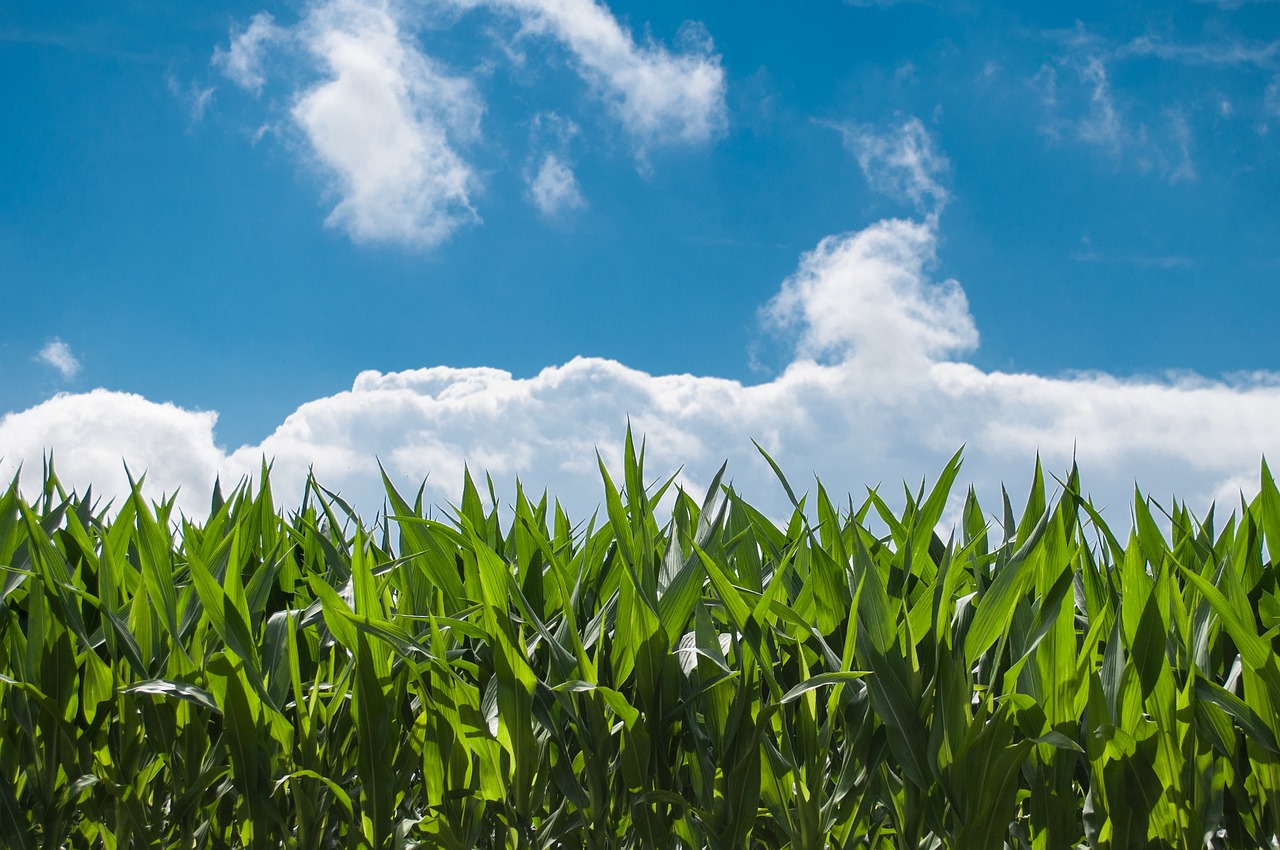
Crop Disease Prediction
Imagine walking through a lush green field, the sun shining down, and the sweet smell of fresh crops in the air. But what if, beneath that vibrant surface, a silent threat lurks? Crop diseases can devastate harvests, leading to significant financial losses for farmers. This is where machine learning steps in as a game changer. By utilizing advanced algorithms, machine learning can analyze vast amounts of data, including environmental conditions, weather patterns, and historical crop health records. This analysis enables farmers to predict potential disease outbreaks before they happen, allowing for timely interventions.
Machine learning models assess various factors that contribute to crop diseases, such as humidity, temperature, and soil conditions. For instance, a model might identify that a specific fungus thrives in high humidity and moderate temperatures. By analyzing weather forecasts and current conditions, farmers can receive alerts about the likelihood of disease development, enabling them to take preventive actions. This proactive approach not only minimizes crop losses but also enhances overall crop health.
Furthermore, the integration of remote sensing technology with machine learning can significantly improve disease prediction accuracy. Drones and satellites equipped with sensors can capture real-time images of fields, allowing for detailed analysis of plant health. These images can reveal early signs of stress or disease that might not be visible to the naked eye. By combining this data with machine learning algorithms, farmers can create a comprehensive picture of their crops' health, leading to more informed decision-making.
To illustrate the effectiveness of machine learning in crop disease prediction, consider the following table that highlights some key benefits:
| Benefit | Description |
|---|---|
| Early Detection | Identifies potential diseases before they spread, allowing for timely intervention. |
| Resource Optimization | Helps allocate resources effectively by targeting areas at risk of disease. |
| Cost Reduction | Reduces the need for extensive pesticide use, leading to lower costs and environmental benefits. |
| Improved Crop Health | Enhances overall crop health through timely treatments and preventative measures. |
In conclusion, the power of machine learning in predicting crop diseases cannot be overstated. As farmers embrace this technology, they not only protect their livelihoods but also contribute to a more sustainable agricultural future. With the ability to anticipate challenges before they arise, farmers can cultivate healthier crops and ensure food security for communities worldwide.
- How does machine learning predict crop diseases? Machine learning analyzes data from various sources, including weather patterns and historical crop health records, to identify potential disease outbreaks.
- What technologies are used in crop disease prediction? Technologies such as remote sensing, drones, and satellite imagery are commonly used to gather data for analysis.
- Can machine learning completely eliminate crop diseases? While it significantly reduces the risk of disease, it cannot completely eliminate them. However, it allows for better management and timely interventions.
- Is machine learning accessible to small-scale farmers? Yes, as technology continues to advance, many platforms are becoming more accessible and affordable for farmers of all sizes.
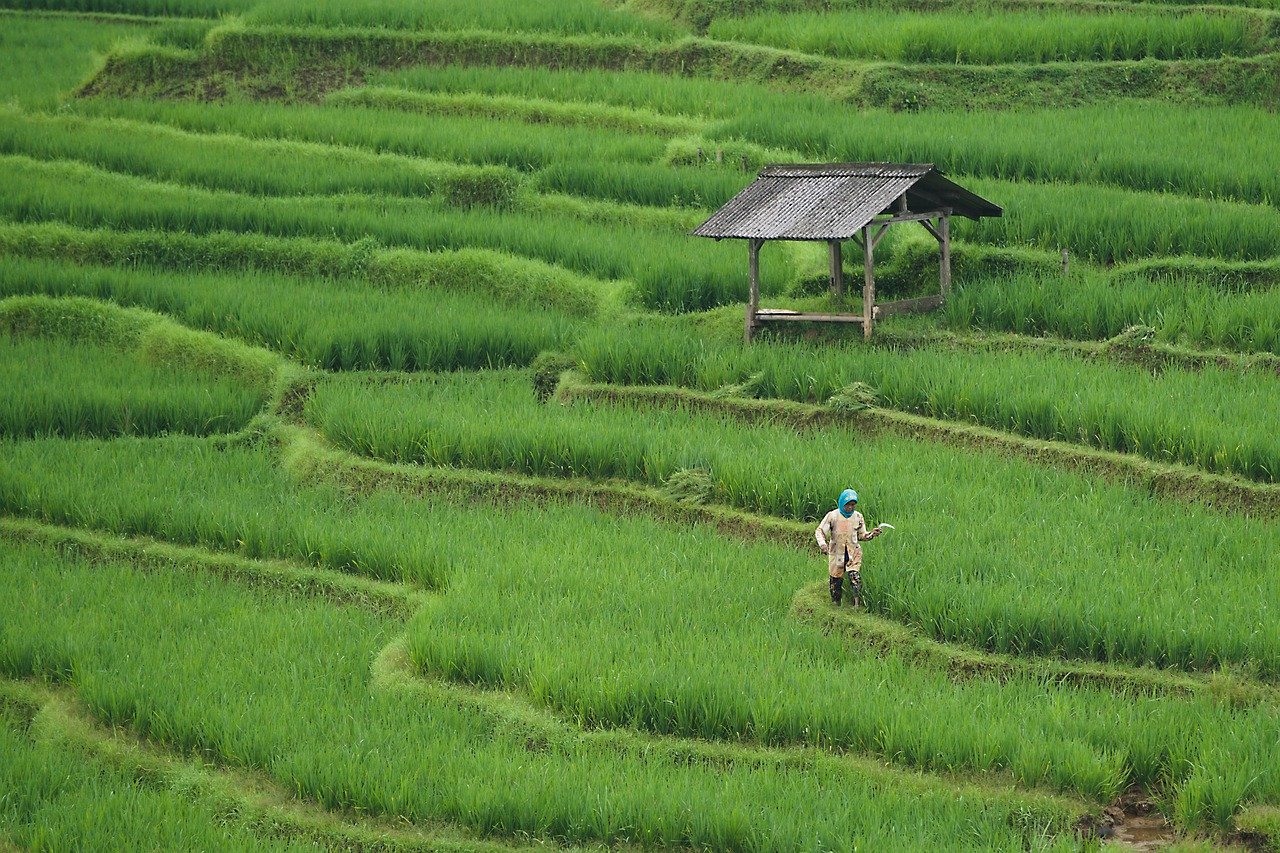
Yield Prediction Models
In the world of agriculture, powered by machine learning are revolutionizing how farmers approach their crops. Imagine being able to forecast your harvest with a level of accuracy that was once thought impossible. These models analyze a multitude of factors, including weather patterns, soil conditions, and historical yield data, to provide farmers with insights that can drastically alter their decision-making process. It's like having a crystal ball that not only tells you what to expect but also guides you on how to prepare for it.
One of the most compelling aspects of yield prediction models is their ability to incorporate real-time data. For instance, machine learning algorithms can process data from various sources, such as satellite imagery and IoT sensors, to give farmers an up-to-date picture of their fields. This means they can anticipate changes in crop performance and adjust their strategies accordingly. Farmers can ask themselves, "What if I could know today what my yield will be in three months?" With these models, that question is becoming increasingly answerable.
Moreover, these predictive models aren't just about knowing what to expect; they also play a critical role in resource allocation. By understanding potential yields, farmers can make informed decisions about where to invest their time and resources. For instance, if a model indicates that a certain field will yield significantly more than others, a farmer might decide to allocate more water or fertilizer to that area. This targeted approach not only maximizes productivity but also minimizes waste, making farming practices more sustainable.
To illustrate the effectiveness of yield prediction models, consider the following table that summarizes key factors influencing crop yield and how machine learning enhances their prediction:
| Factor | Traditional Approach | Machine Learning Approach |
|---|---|---|
| Weather Patterns | Seasonal forecasts | Real-time data analysis and forecasting |
| Soil Conditions | Periodic testing | Continuous monitoring via sensors |
| Crop Variety | Historical data | Dynamic modeling based on multiple variables |
| Pest and Disease Pressure | Reactive measures | Predictive analytics for early intervention |
As we delve deeper into this technology, it's essential to recognize that yield prediction models are not a one-size-fits-all solution. Different crops and regions may require tailored models that account for unique environmental and economic factors. This adaptability is what makes machine learning such a valuable tool in modern agriculture.
In conclusion, the integration of yield prediction models into farming practices is not just a trend; it's a transformative shift towards more informed and efficient agriculture. By harnessing the power of machine learning, farmers can enhance their productivity, reduce waste, and ultimately contribute to a more sustainable food system. So, the next time you bite into a fresh tomato or a crunchy apple, remember that machine learning might just be behind that delicious harvest!
- What are yield prediction models? Yield prediction models are algorithms that analyze various factors to forecast the expected harvest of crops.
- How does machine learning improve yield predictions? Machine learning uses real-time data and historical trends to create more accurate forecasts compared to traditional methods.
- Can yield prediction models be used for all types of crops? Yes, but they may need to be tailored to account for the specific conditions and characteristics of different crops.
- What are the benefits of using these models? Benefits include improved resource allocation, reduced waste, and enhanced sustainability in farming practices.
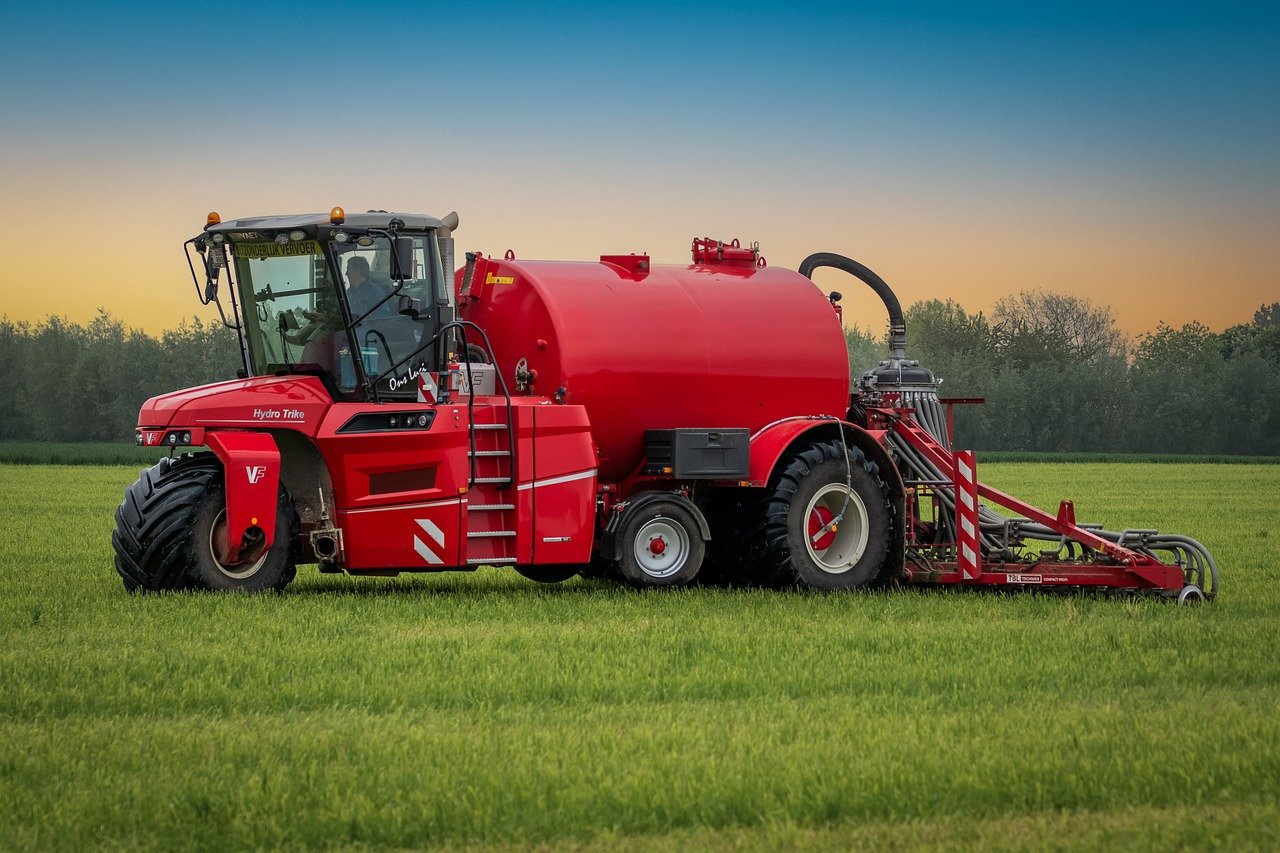
Soil Health Monitoring
Soil health monitoring is becoming a cornerstone of modern agriculture, and it's all thanks to the incredible advancements in machine learning. Imagine your soil as a living organism, constantly changing and evolving. Just like we need regular check-ups to maintain our health, soil requires constant monitoring to ensure it’s in tip-top shape for growing crops. With machine learning, farmers can analyze vast amounts of data collected from various sources, such as satellite imagery, soil sensors, and historical records, to gain insights into the health of their soil.
One of the most exciting aspects of machine learning in soil health monitoring is its ability to identify patterns and correlations that might be invisible to the naked eye. For instance, by examining data on soil composition, moisture levels, and nutrient availability, machine learning algorithms can predict how different factors affect soil health over time. This predictive power allows farmers to implement tailored soil management practices that enhance fertility and sustainability.
But how does this all work? Well, it's a bit like solving a complex puzzle. Farmers gather data from various sources, including:
- Soil moisture sensors that provide real-time data on moisture levels
- Satellite imagery that offers insights into land use and vegetation health
- Historical data on crop yields and soil conditions
Once this data is collected, machine learning algorithms sift through it, identifying trends and anomalies. For example, if a particular area of the field consistently shows lower crop yields, the algorithm can analyze the soil data to determine if it’s due to nutrient deficiencies, poor drainage, or other factors. This kind of analysis empowers farmers to make informed decisions, such as adjusting fertilizer applications or modifying irrigation practices.
Additionally, machine learning can help in assessing the impact of different farming practices on soil health. By comparing data from fields using traditional farming methods versus those employing regenerative practices, farmers can see firsthand which methods yield healthier soil. This not only promotes sustainable farming practices but also encourages a shift towards more eco-friendly approaches that benefit both the environment and crop productivity.
Furthermore, machine learning tools can offer real-time recommendations for soil management. For example, if sensors detect that a specific nutrient level is low, the system can alert the farmer to apply a specific fertilizer at the optimal time, ensuring that crops receive exactly what they need to thrive. This level of precision in soil management is not only beneficial for crop yields but also contributes to reducing environmental impact by minimizing over-fertilization and runoff.
In summary, soil health monitoring powered by machine learning is revolutionizing the way farmers manage their land. By providing insights that were previously unattainable, it allows for more sustainable and productive agricultural practices. As we continue to embrace technology in farming, the possibilities for improving soil health—and, consequently, food security—are truly exciting.
- What is soil health monitoring?
Soil health monitoring refers to the ongoing assessment of soil conditions to ensure it is suitable for crop production, focusing on factors like nutrient levels, moisture, and overall soil structure. - How does machine learning help in soil health monitoring?
Machine learning analyzes vast amounts of data from various sources to identify patterns and predict soil health trends, enabling farmers to make informed management decisions. - What kind of data is used in soil health monitoring?
Data sources include soil moisture sensors, satellite imagery, and historical agricultural records, which together provide a comprehensive view of soil conditions. - Can soil health monitoring improve crop yields?
Yes, by optimizing soil management practices based on real-time data and predictions, farmers can enhance crop yields and overall farm productivity.
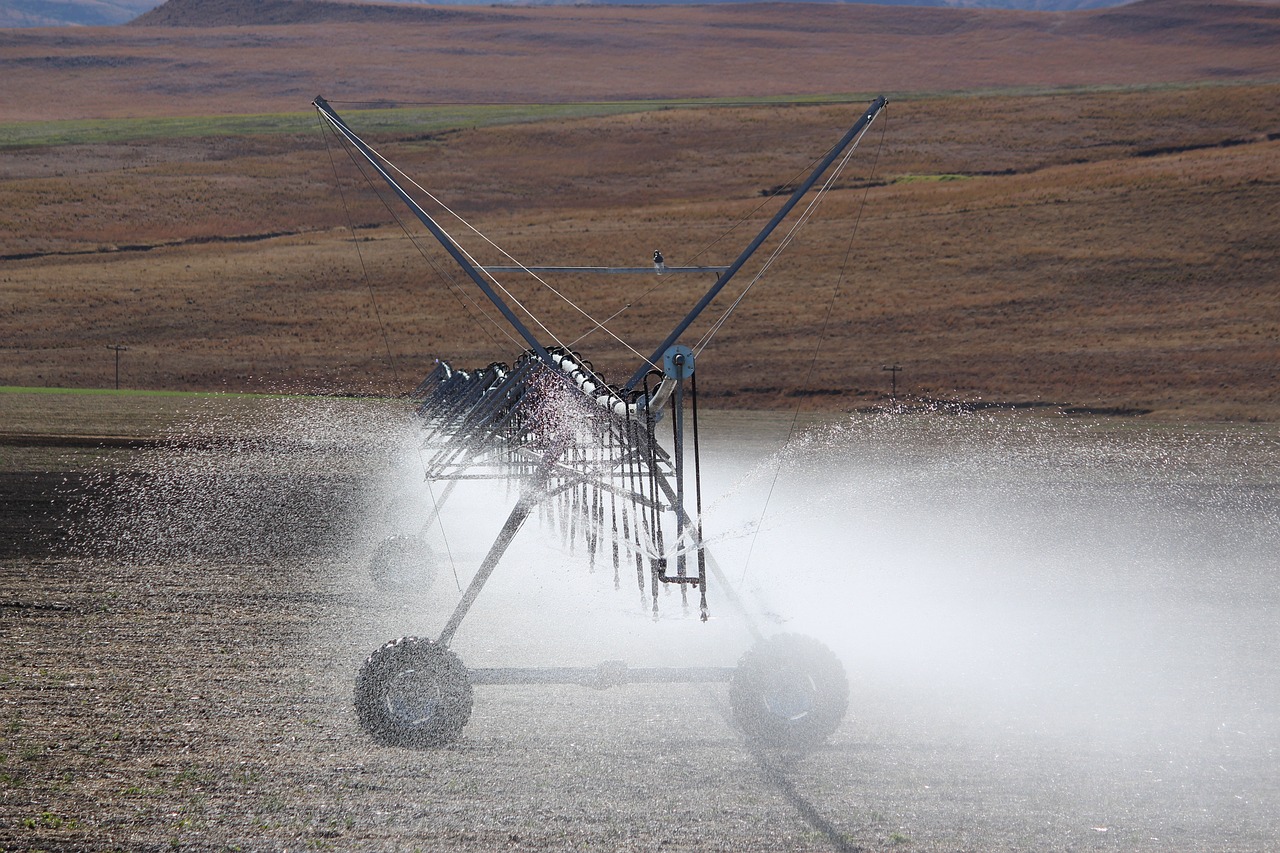
Automated Irrigation Systems
Imagine a world where farmers can sit back and let technology handle the watering of their crops. Sounds futuristic, right? Well, with the advent of , this dream is becoming a reality. These systems leverage machine learning to optimize water usage, ensuring that crops receive the right amount of hydration at the right time. This not only conserves water but also enhances crop yield and quality.
At the core of these systems is data. Automated irrigation systems utilize real-time weather data, soil moisture levels, and even plant health information to make decisions about when and how much to water. For instance, if a machine learning model detects that the soil moisture is below a certain threshold, it can automatically trigger the irrigation system to activate. This process is akin to having a personal assistant who knows exactly when you need a drink of water!
Moreover, these systems are designed to adapt. They learn from past watering schedules and environmental conditions to improve their efficiency over time. By analyzing patterns in weather data, such as rainfall forecasts or temperature spikes, they can adjust irrigation schedules accordingly. This adaptability not only saves water but also reduces the risk of overwatering, which can lead to root rot and other plant diseases.
To illustrate the efficiency of automated irrigation systems, consider the following table that compares traditional irrigation methods with automated systems:
| Feature | Traditional Irrigation | Automated Irrigation |
|---|---|---|
| Water Usage | Often excessive, leading to waste | Optimized based on real-time data |
| Labor Requirements | High, needing constant monitoring | Low, with minimal human intervention |
| Response to Weather Changes | Manual adjustments needed | Automatic adjustments based on data |
| Crop Health Monitoring | Limited insights | Integrates with sensors for real-time health data |
Additionally, the integration of sensor technology plays a crucial role in the effectiveness of automated irrigation systems. Sensors placed in the soil can provide critical information about moisture levels, temperature, and even nutrient content. This data is then fed into machine learning algorithms that analyze and predict the best irrigation practices. It’s like having a team of scientists working tirelessly to ensure that crops receive optimal care!
Despite the numerous benefits, the transition to automated irrigation systems does come with its challenges. Initial setup costs can be significant, and there's a learning curve associated with implementing new technologies. However, the long-term savings in water usage and increased crop yields often outweigh these initial investments. Farmers who embrace this technology not only contribute to a more sustainable agricultural practice but also position themselves to thrive in an increasingly competitive market.
In conclusion, automated irrigation systems represent a significant advancement in agricultural practices. By harnessing the power of machine learning and real-time data, these systems are revolutionizing how farmers manage their water resources. As technology continues to evolve, we can expect even more innovative solutions that will further enhance agricultural productivity and sustainability.
- What is an automated irrigation system?
An automated irrigation system uses technology and data to manage watering schedules and amounts, optimizing water usage for crops.
- How does machine learning enhance irrigation?
Machine learning analyzes data from various sources to make real-time decisions about when and how much to water crops, improving efficiency.
- Are automated irrigation systems expensive to install?
While initial costs can be high, the long-term savings in water and labor often justify the investment.
- Can these systems be used for all types of crops?
Yes, automated irrigation systems can be tailored to meet the specific needs of various crops, making them versatile for different farming practices.
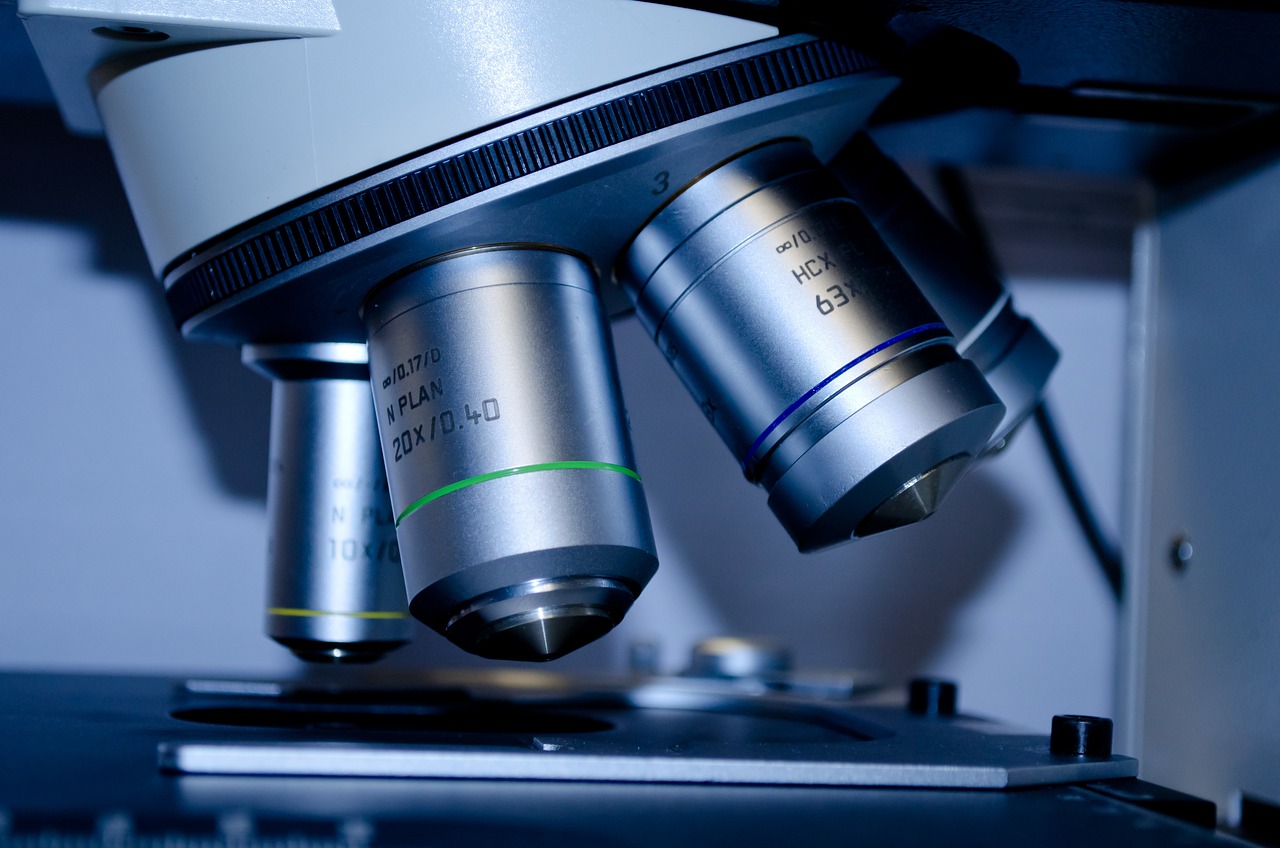
Supply Chain Optimization
In the world of agriculture, the supply chain is the lifeblood that connects farmers to consumers. Imagine a well-oiled machine where every cog works in harmony to deliver fresh produce to your table. This is where machine learning steps in, revolutionizing the way we think about supply chain optimization. By harnessing the power of advanced algorithms, machine learning can analyze vast amounts of data to predict demand, optimize logistics, and reduce waste.
One of the most significant advantages of using machine learning in supply chain optimization is its ability to forecast demand with remarkable accuracy. By evaluating historical sales data, weather patterns, and even social media trends, machine learning models can predict which products will be in demand and when. This means farmers can plan their production schedules more effectively, ensuring they grow the right amount of crops at the right time. For example, if a model indicates a spike in demand for strawberries during the summer months, farmers can adjust their planting schedules accordingly, reducing the risk of overproduction and waste.
Furthermore, machine learning enhances logistics by optimizing transportation routes and delivery schedules. Think about it: instead of relying on outdated methods or guesswork, farmers can use real-time data to determine the most efficient ways to transport their goods. This not only saves time and money but also minimizes the carbon footprint associated with transportation. For instance, a machine learning system can analyze traffic patterns, weather conditions, and storage capacities to suggest the best routes for delivery trucks, ensuring that produce arrives at its destination fresh and on time.
To illustrate the impact of machine learning on supply chain optimization, consider the following table that highlights key benefits:
| Benefit | Description |
|---|---|
| Improved Demand Forecasting | Accurate predictions help farmers grow the right amount of crops, reducing waste. |
| Enhanced Logistics | Optimized routes and schedules lead to fresher produce and lower transportation costs. |
| Waste Reduction | Better planning minimizes surplus crops and food waste in the supply chain. |
| Increased Profitability | Efficient operations lead to cost savings and higher profit margins for farmers. |
However, it's essential to recognize that the journey towards optimized supply chains is not without its challenges. Farmers, particularly those in rural areas, may face hurdles in accessing the necessary technology and data. Additionally, the integration of machine learning into existing systems requires training and adaptation, which can be daunting for some. Yet, the potential rewards far outweigh the difficulties, as machine learning paves the way for a more efficient and sustainable agricultural future.
As we continue to embrace these technological advancements, the agricultural supply chain will become increasingly resilient and responsive. In a world where consumers demand fresher, locally-sourced produce, machine learning stands as a beacon of hope, guiding farmers and distributors towards a more efficient, sustainable, and profitable future.
- What is supply chain optimization in agriculture?
Supply chain optimization refers to the process of improving the flow of goods and services from farm to consumer, ensuring efficiency, reducing costs, and minimizing waste.
- How does machine learning help in demand forecasting?
Machine learning analyzes historical data and trends to predict future demand for agricultural products, allowing farmers to plan their production accordingly.
- What are the benefits of using machine learning in logistics?
Machine learning enhances logistics by optimizing transportation routes and schedules, leading to fresher produce and reduced transportation costs.
- Are there challenges in implementing machine learning in agriculture?
Yes, challenges include access to technology, the need for training, and the integration of new systems into existing agricultural practices.
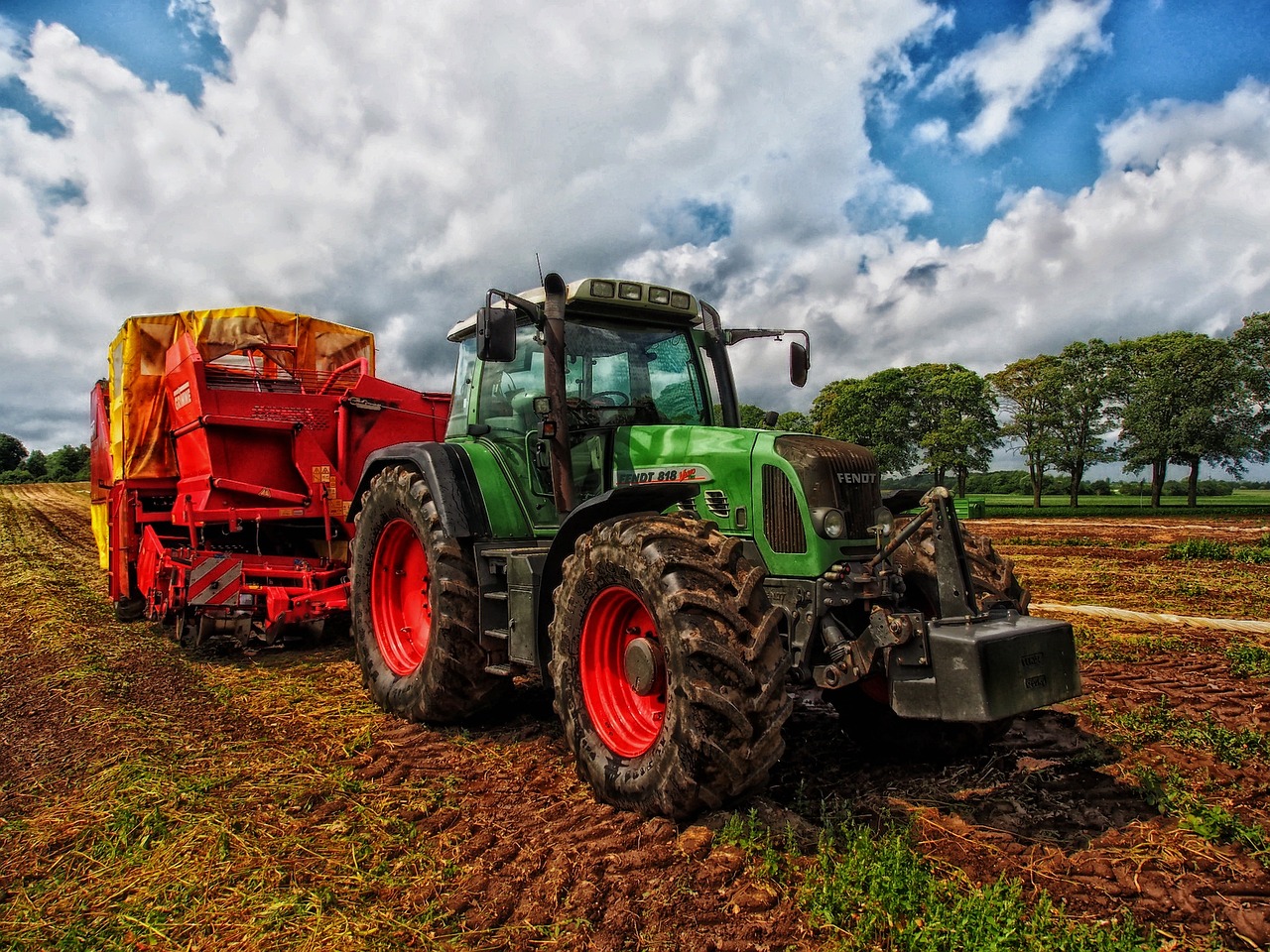
Data-Driven Decision Making
In the rapidly evolving world of agriculture, has emerged as a game changer. Imagine standing in a vast field, surrounded by crops that hold the promise of a bountiful harvest. Now, picture having the power to predict the outcomes of your farming practices with the help of advanced machine learning algorithms. This is not just a dream; it is the reality that farmers are embracing today. By harnessing the wealth of data available, farmers can make informed choices that not only enhance productivity but also promote sustainability.
At the heart of this transformation lies the ability to analyze vast amounts of data collected from various sources, such as weather patterns, soil conditions, and crop health indicators. For instance, machine learning models can process historical yield data and correlate it with current environmental conditions to provide actionable insights. This enables farmers to ask critical questions: What crops should I plant this season? How can I improve soil health? When is the optimal time for irrigation? With data-driven answers, these questions become less daunting.
Moreover, the integration of data analytics into farming practices empowers farmers to monitor their operations in real-time. This means they can track the effectiveness of their interventions and adapt their strategies accordingly. For example, if a farmer notices that a particular fertilizer is not yielding the expected results, they can quickly pivot and try a different approach based on data insights. This agility in decision-making is crucial in a field where conditions can change rapidly.
To illustrate the impact of data-driven decision making, consider the following table that outlines some key benefits:
| Benefit | Description |
|---|---|
| Increased Efficiency | Farmers can optimize resource use, reducing waste and costs. |
| Improved Crop Management | Data insights help in selecting the right crops and managing them effectively. |
| Enhanced Risk Management | Predictive analytics allow for better preparation against adverse conditions. |
| Greater Sustainability | Data-driven practices lead to more sustainable farming methods. |
However, the journey towards data-driven decision making is not without its challenges. Many farmers, especially those in developing regions, may lack access to the necessary technology or training. This digital divide can hinder the adoption of machine learning tools and limit the potential benefits for some agricultural communities. Therefore, it is essential to address these disparities and ensure that all farmers can leverage data effectively.
In conclusion, embracing in agriculture is akin to having a compass in a dense forest; it guides farmers through the complexities of modern farming. By utilizing machine learning and data analytics, they can navigate challenges, seize opportunities, and ultimately cultivate a more productive and sustainable future. So, are you ready to step into the future of farming?
- What is data-driven decision making in agriculture? It refers to the use of data analytics and machine learning to inform and optimize farming practices.
- How can farmers access data for decision making? Farmers can utilize various sources such as weather stations, satellite imagery, and farm management software.
- What are the challenges of implementing data-driven strategies? Challenges include access to technology, lack of training, and potential data privacy concerns.
- Can small-scale farmers benefit from data-driven decision making? Absolutely! With the right tools and support, small-scale farmers can gain valuable insights to improve their practices.
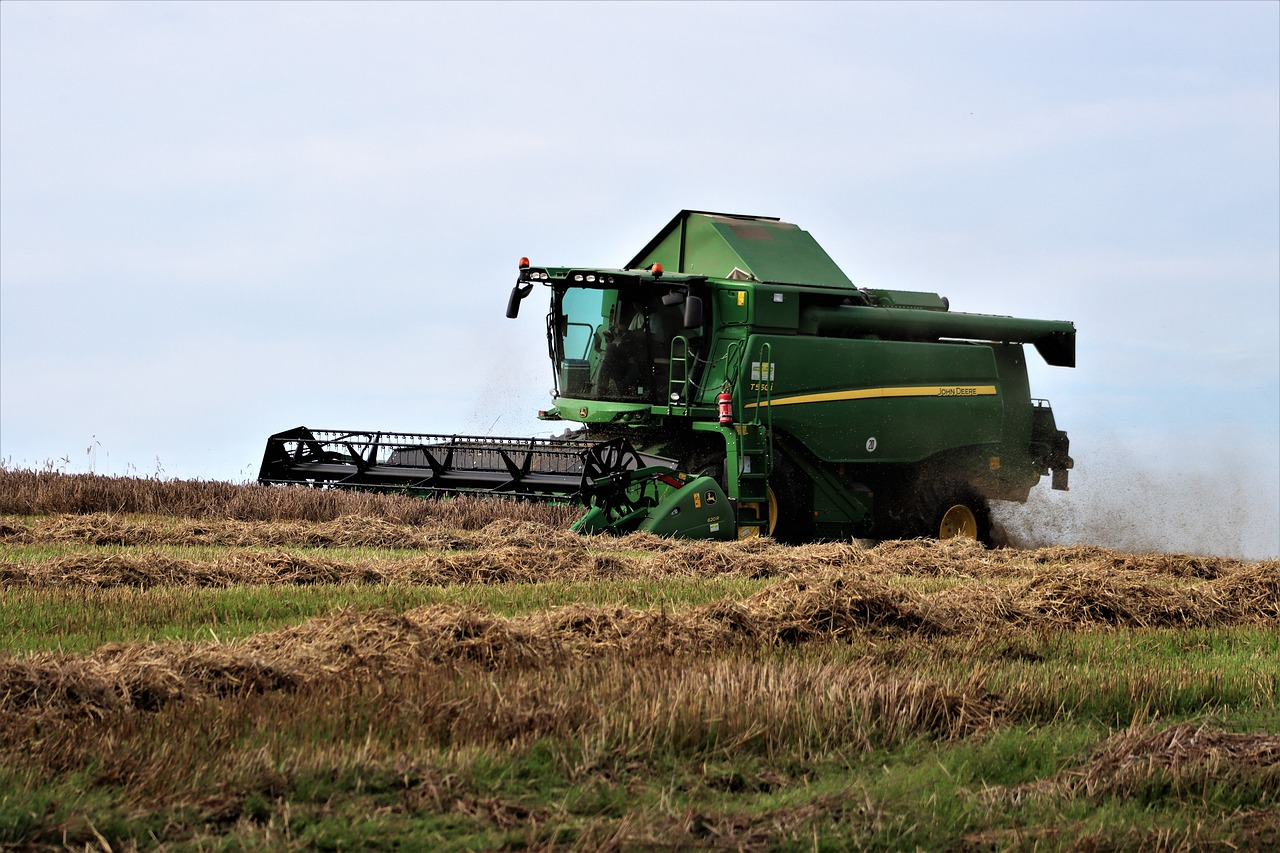
Robotics and Automation
As we step into a new era of agricultural innovation, are at the forefront, reshaping the way we approach farming. Imagine a field where robots are not just a figment of science fiction but are actively planting, watering, and harvesting crops. This isn't just a dream; it's rapidly becoming a reality thanks to advancements in machine learning. These technologies are streamlining agricultural processes, increasing efficiency, and allowing farmers to focus on what truly matters—growing healthy crops.
With the integration of machine learning, robotics in agriculture can analyze vast amounts of data in real-time, allowing for precise actions that were previously unimaginable. For instance, autonomous tractors equipped with sensors can navigate fields, detect weeds, and apply herbicides only where necessary, significantly reducing chemical use and environmental impact. This targeted approach not only saves money but also promotes a healthier ecosystem.
Moreover, the use of drones has revolutionized crop monitoring. These flying robots can cover large areas quickly, capturing high-resolution images and data on crop health. By utilizing machine learning algorithms, farmers can receive actionable insights about their crops, such as identifying areas that require more water or nutrients. This level of detail enables farmers to make informed decisions, optimizing their resources and improving overall yield.
Automation doesn't stop at planting and monitoring; it extends to harvesting as well. Robotic harvesters can work around the clock, picking ripe fruits and vegetables with incredible precision. This not only increases productivity but also addresses the labor shortages that many farmers face today. In fact, as the demand for food continues to rise, the need for efficient harvesting solutions becomes even more critical.
However, while the benefits of robotics and automation in agriculture are substantial, they also bring forth important considerations. Farmers must navigate the costs associated with implementing these technologies, which can be significant. Additionally, there is a growing concern about the potential displacement of traditional farmworkers. As we embrace these advancements, it is crucial to strike a balance between technological progress and the livelihoods of those who have dedicated their lives to farming.
In conclusion, the future of agriculture is undeniably intertwined with . By leveraging machine learning, farmers can enhance productivity, reduce waste, and promote sustainable practices. As we continue to innovate, it’s essential to remain mindful of the challenges that accompany these changes, ensuring that the agricultural community can thrive in this new landscape.
- What are the main benefits of using robotics in agriculture?
Robotics in agriculture can lead to increased efficiency, reduced labor costs, and improved crop health through precise interventions. - How does machine learning enhance agricultural robotics?
Machine learning allows robots to analyze data in real-time, making informed decisions that improve farming practices. - Are there any downsides to automating farming processes?
Yes, there can be significant costs associated with implementation, and there are concerns about job displacement for traditional farmworkers.

Challenges and Ethical Considerations
As we dive deeper into the realm of machine learning in agriculture, it's essential to acknowledge that with great power comes great responsibility. While the benefits of machine learning are vast and transformative, there are significant challenges and ethical considerations that cannot be overlooked. For instance, the reliance on data raises questions about data privacy. Farmers and agricultural businesses are increasingly required to share their data with technology providers, which can lead to concerns over how this data is used, stored, and protected. Are we sacrificing our privacy for the sake of efficiency?
Moreover, the digital divide presents a considerable challenge. Not all farmers have equal access to advanced technology or the internet. Smallholder farmers, particularly in developing regions, may find themselves at a disadvantage as larger agribusinesses adopt machine learning tools. This disparity could lead to a widening gap in productivity and profitability, ultimately affecting food security on a global scale. The question arises: how can we ensure that all farmers benefit from these advancements?
Another critical concern revolves around the potential impact of machine learning on traditional farming practices. As automated systems and robotics gain traction, there is a fear that the essence of farming—its cultural and community aspects—might be lost. The charm of a family-run farm may be overshadowed by the efficiency of a machine. This brings us to the ethical implications of automation: while it may enhance productivity, at what cost do we prioritize efficiency over tradition?
In addition, machine learning algorithms are only as good as the data fed into them. If the data is biased or incomplete, the predictions and recommendations generated can lead to poor decision-making. For example, if a model is trained primarily on data from large farms, it may not accurately predict outcomes for smaller operations. This raises the ethical dilemma of ensuring that machine learning systems are developed with diverse and representative datasets to avoid perpetuating inequalities.
To tackle these challenges, it is crucial to foster an inclusive approach. Here are some steps that can be taken:
- Data Governance: Establish clear guidelines on data ownership and usage to protect farmers' privacy.
- Access Initiatives: Implement programs that provide smallholder farmers with the necessary tools and training to leverage machine learning technologies.
- Community Engagement: Involve farmers in the development of machine learning applications to ensure their needs and concerns are addressed.
- Bias Mitigation: Focus on creating algorithms that are trained on diverse datasets to enhance the accuracy and fairness of predictions.
In conclusion, while machine learning holds the promise of revolutionizing agriculture, it is imperative that we navigate the associated challenges and ethical considerations with care. By doing so, we can harness the full potential of technology while ensuring that it serves all members of the farming community fairly and responsibly.
1. What are the main challenges of implementing machine learning in agriculture?
The main challenges include data privacy concerns, the digital divide affecting access to technology, the potential loss of traditional farming practices, and the risk of biased algorithms.
2. How can smallholder farmers benefit from machine learning?
Through targeted initiatives aimed at providing access to technology, training, and resources, smallholder farmers can leverage machine learning to enhance productivity and sustainability.
3. What ethical considerations should be taken into account?
Ethical considerations include data governance, ensuring the inclusivity of diverse datasets, and maintaining the cultural significance of traditional farming practices.
Frequently Asked Questions
- How does machine learning improve precision farming?
Machine learning enhances precision farming by analyzing vast amounts of data to provide insights that help farmers optimize crop yields. By utilizing algorithms, farmers can monitor real-time conditions, reduce waste, and make targeted interventions that lead to better resource management.
- Can machine learning predict crop diseases?
Absolutely! Machine learning models can analyze historical data and environmental conditions to predict potential crop diseases. This allows farmers to implement preventive measures early, minimizing losses and ensuring healthier crops overall.
- What are yield prediction models?
Yield prediction models powered by machine learning give farmers insights into expected harvests based on various influencing factors, such as weather patterns and soil conditions. This information helps them make informed decisions regarding resource allocation and market strategies.
- How does machine learning monitor soil health?
Machine learning techniques assess soil health by analyzing data from sensors and satellite imagery. This enables farmers to implement tailored soil management practices that enhance soil fertility, ensuring sustainability and improved crop production.
- What role do automated irrigation systems play in agriculture?
Automated irrigation systems utilize machine learning to optimize water usage based on real-time weather data and soil moisture levels. This promotes efficient water management, crucial for sustainable farming practices in an era of climate variability.
- How can machine learning optimize agricultural supply chains?
Machine learning enhances agricultural supply chains by predicting demand and optimizing logistics. This leads to reduced waste and more efficient distribution of agricultural products, ultimately benefiting both producers and consumers.
- What is data-driven decision-making in agriculture?
Data-driven decision-making refers to the integration of machine learning in agriculture, allowing farmers to analyze large datasets for better strategic planning and operational efficiency. This approach enables them to make informed decisions that can significantly enhance productivity.
- How is robotics and automation changing agriculture?
Machine learning is at the forefront of advancements in agricultural robotics and automation. It streamlines tasks like planting, harvesting, and monitoring, which not only increases productivity but also reduces labor costs, making farming more efficient.
- What challenges does machine learning present in agriculture?
While machine learning offers numerous opportunities, it also poses challenges such as data privacy concerns, unequal access to technology, and the potential impact on traditional farming practices. Addressing these ethical considerations is crucial for the sustainable adoption of these technologies.


















